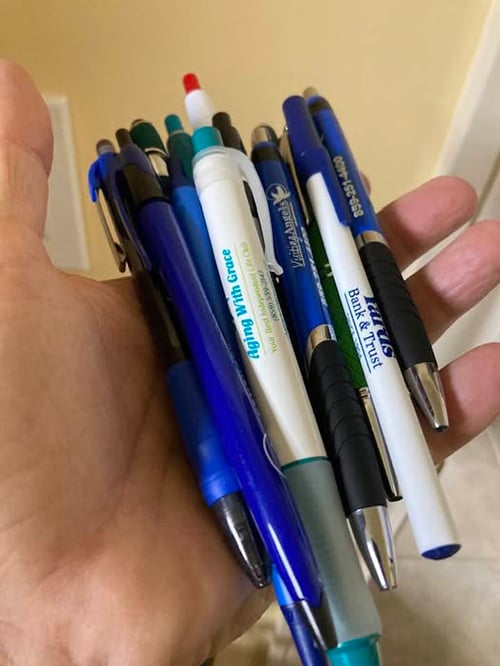Staff report
Today is Earth Day and it’s ‘Planet vs. Plastics’ as advocates call for more awareness about the harm plastics are doing to the environment — and to public health.

The stage was set for the start of the annual Earth Day on April 22 with the publication of Rachel Carson’s New York Times bestseller Silent Spring in 1962. The book represented a watershed moment, selling more than 500,000 copies in 24 countries as it raised public awareness and concern for living organisms, the environment, and the links between pollution and public health.
Back then, Sen. Gaylord Nelson of Wisconsin and activist Denis Hayes took up the cause — and choose April 22 — a weekday falling between Spring Break and Final exams to maximize student participation in the First Earth Day, 1970. It caught on quickly — and 20 million Americans took part in demonstrations against the assault on the environment. All this led to the creation of the U.S. Environmental Protection Agency and the passage of other first-of-their kind environmental laws.
A principal Earth Day event in 1980, held in Washington, D.C., capped a decade of substantial U.S. environmental regulation, and Earth Day continued to expand globally. Along the way Earth Day themes have included water quality, climate change, clean air, recycling, land management, pollution, toxic substances control, endangered species, clean energy, sustainability issues, the green economy — and the whole range of issues that affect the environment.
This year’s Planet vs. Plastics calls for the end of plastics for the sake of human and planetary health, demanding a 60% reduction in the production of plastics by 2040 and an ultimate goal of building a plastic-free future for generations to come.
To achieve a 60% reduction by 2040, EARTHDAY.ORG has announced these goals:
• promoting widespread public awareness of the damage done by plastic to human, animal, and all biodiversity’s health and demanding more research be conducted on its health implications, including the release of any and all information regarding its effects to the public;

• rapidly phasing out all single use plastics by 2030 and achieving this phase out commitment in the United Nations Treaty on Plastic Pollution in 2024;
• demanding policies ending the scourge of fast fashion and the vast amount of plastic it produces and uses; and
• investing in innovative technologies and materials to build a plastic-free world.
“The word environment means what surrounds you. In the case of plastics we have become the product itself – it flows through our blood stream, adheres to our internal organs, and carries with it heavy metals known to cause cancer and disease. Now this once-thought amazing and useful product has become something else, and our health and that of all other living creatures hangs in the balance,” said Kathleen Rogers, President of EARTHDAY.ORG. “The Planet vs. Plastics campaign is a call to arms, a demand that we act now to end the scourge of plastics and safeguard the health of every living being upon our planet.”
As plastics break down into microplastics, they release toxic chemicals into our food and water sources and circulate through the air we breathe, she says. Plastic production now has grown to more than 380 million tons per year.
“All this plastic was produced by a petrochemical industry with an abysmal record of toxic emissions, spills, and explosions,” said Denis Hayes, Chair Emeritus of EARTHDAY.ORG. “Plastics are produced in polluting facilities that somehow seem to always be located in the poorest neighborhoods. Some plastics are lethal when combusted; other plastics transmit hormone-disrupting chemicals; and all plastics can starve birds and suffocate sea life. At every stage of their life cycles, from the oil well to the town dump, plastics are a dangerous blight.”
More than 500 billion plastic bags — one million bags per minute — were produced worldwide last year. Many plastic bags have a working life of a few minutes, followed by an afterlife of centuries. Even after plastics disintegrate, they remain as microplastics, minute particles permeating every niche of life on the planet.

According to the organization’s website, 100 billion plastic beverage containers were sold last year in the United States, more than 300 bottles per inhabitant. A few of them will be converted into park benches but none of them will be made into new plastic bottles. And 95% of all plastics in the U.S. won’t be recycled at all.
People seldom think of water when they think of plastics. But making a plastic water bottle requires six times as much water as the bottle itself contains, according to EARTHDAY.
In addition, according the website, the fast fashion industry annually produces over 100 billion garments. Overproduction and overconsumption have transformed the industry, leading to the disposability of fashion. People now buy 60% more clothing than 15 years ago, but each item is kept for only half as long.
Approximately 85% of garments end up in landfills or incinerators, with only 1% being recycled. Nearly 70% of clothing is made from crude oil, resulting in the release of dangerous microfibers when washed and continued contribution to long-term pollution in landfills.
To learn more about Planet vs. Plastics and join the movement for a plastic-free future, please visit: Earth Day 2024. To educate yourself on the impacts of plastic on human health, check out the Plastics Health Research Module and EARTHDAY.ORG’s Earth Hub for all fact sheets, toolkits, and articles.

















